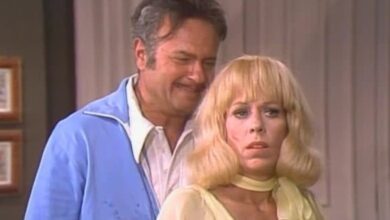Creedence Clearwater Revival’s ‘Bad Moon Rising’ Forecasted Cultural Turmoil with a Rockabilly Swagger in 1969
Released in April 1969, Creedence Clearwater Revival’s “Bad Moon Rising” may sound deceptively upbeat, but beneath its jangly guitar and rockabilly rhythm lies a song that captured the underlying dread of a turbulent era. Peaking at No. 2 on the Billboard Hot 100 and No. 1 in the UK Singles Chart, the track stood out with its unique fusion of apocalyptic lyricism and foot-tapping melody. At a time when America was reeling from political assassinations, the Vietnam War, and widespread civil unrest, “Bad Moon Rising” provided an eerily cheerful soundtrack to societal anxiety.
CCR, led by frontman and primary songwriter John Fogerty, emerged from El Cerrito, California, far from the epicenters of San Francisco psychedelia or Los Angeles pop. The band’s raw, swampy sound stood in stark contrast to the polished productions dominating radio. Fogerty’s Southern-influenced vocals, paired with tight, minimalist instrumentation, carved out a niche often described as “Bayou rock”—despite the band’s West Coast roots. What set CCR apart was their uncanny ability to combine roots-based authenticity with mass appeal.
The inspiration for “Bad Moon Rising” came from an unlikely source—the 1941 film “The Devil and Daniel Webster”, which featured a scene where a massive storm devastates a small town. Fogerty took this image and crafted a song that metaphorically predicted a storm of its own: one of war, protests, and disillusionment. The phrase “bad moon on the rise” became an emblem of imminent disaster cloaked in poetic simplicity. Fogerty has since said the song reflects a sense of doom he felt in the air, something many listeners in 1969 could deeply relate to.
Recorded at RCA Studios in Hollywood, the track was produced by Fogerty himself, showcasing his hands-on control over the band’s sound. The arrangement is deceptively simple: clean rhythm guitar, driving percussion, and Fogerty’s unmistakable vocal twang. Its 2-minute-and-21-second runtime is lean, efficient, and urgent. Unlike many other hits of the era, there are no extended solos or studio tricks. The song’s power lies in its clarity—an unfiltered message riding on an infectious rhythm.
Upon release, “Bad Moon Rising” garnered immediate attention. It climbed rapidly up the charts, both in the United States and internationally, topping the UK charts and securing the band’s first No. 1 hit abroad. Critics praised its paradoxical charm—dark lyrics wrapped in a sunny delivery. Fans, meanwhile, found themselves singing along to a song about disaster with unexpected cheerfulness. The juxtaposition made it unforgettable, and its radio success cemented CCR’s place as one of the leading bands of the post-psychedelic rock landscape.
Culturally, the song resonated far beyond the charts. 1969 was the year of Woodstock, the Manson murders, and escalating violence in Vietnam. “Bad Moon Rising” tapped into the collective unconscious of a generation bracing for chaos. Its refrain, “Don’t go around tonight / Well, it’s bound to take your life,” wasn’t just a lyric—it was a warning that felt all too real. It became an anthem not just of the era’s unrest, but of its surreal blending of joy and fear.
For CCR, this track marked a turning point. It introduced them to a global audience and solidified Fogerty’s reputation as a songwriting force. Following its release, the band would embark on a string of hits including “Green River” and “Down on the Corner,” turning 1969 into their breakout year. They toured extensively and became one of the few American acts to maintain critical and commercial dominance in the UK, all while continuing to produce politically tinged, roots-oriented rock.
The influence of “Bad Moon Rising” spread across genres. Its straightforward structure and dark themes inspired covers from artists as diverse as Jerry Lee Lewis, Emmylou Harris, and even punk band The Minutemen. Each interpretation highlighted a different facet of the song—some leaned into its country leanings, others into its apocalyptic dread. The track’s adaptability speaks to its songwriting strength.
One of the most notable renditions came from Mourning Ritual, whose haunting, slowed-down version was featured in the TV series The Walking Dead. This modern context gave the song new life and introduced it to a younger generation as a harbinger of doom in a post-apocalyptic world. It’s a testament to the song’s enduring versatility and emotional weight.
At the time of the song’s release, John Fogerty was navigating newfound fame and the mounting pressure to sustain success. Internally, tensions were beginning to simmer within CCR—especially between Fogerty and the other band members, who felt sidelined in creative decisions. While those fractures wouldn’t fully erupt until a few years later, “Bad Moon Rising” was released during the calm before the storm—artistically and personally.
Decades later, the song remains a fixture on classic rock radio, frequently included in films, commercials, and video games. It was ranked among Rolling Stone’s “500 Greatest Songs of All Time,” and continues to be a popular choice in setlists and covers. It’s a rare track that blends timeless musicality with culturally specific relevance, making it both nostalgic and eternally fresh.
In terms of musical evolution, “Bad Moon Rising” helped pave the way for darker themes in rock music to reach mainstream audiences. Without sacrificing accessibility, it opened the door for artists to tackle political and existential themes through upbeat, even danceable frameworks—a blueprint later followed by bands like R.E.M. and The Clash.
While Creedence Clearwater Revival never officially reunited after their breakup in 1972, the legacy of “Bad Moon Rising” has endured. Fogerty continues to perform the song in his solo shows, often introducing it with context or reflection on the times it was born from. Its relevance hasn’t faded—in fact, its message seems to renew itself with every new global storm.
Ultimately, “Bad Moon Rising” is more than just a hit song from 1969. It’s a musical paradox: cheerful yet foreboding, catchy yet cautionary. It remains one of CCR’s most iconic works, embodying both their sound and the uneasy spirit of the time. Its impact on rock history is undeniable, and more than 50 years later, that “bad moon” still rises—every time the opening chords play.





